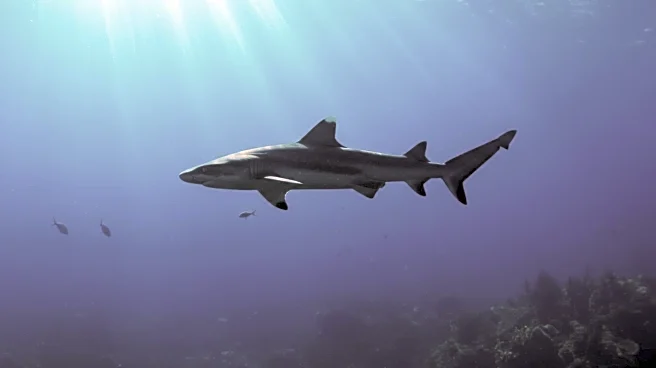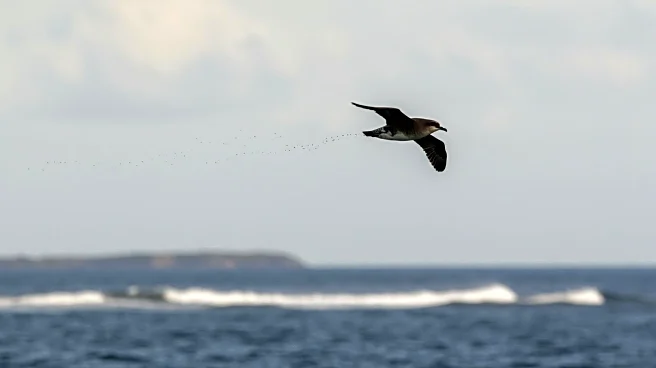What's Happening?
Researchers from Sun Yat-sen University and the Southern Marine Science and Engineering Guangdong Laboratory, in collaboration with the Institute of Acoustics at the Chinese Academy of Sciences, conducted a unique experiment by placing a cow carcass on the seafloor of the South China Sea. This experiment aimed to simulate a 'whale fall,' a phenomenon where a dead whale sinks to the ocean floor, creating a temporary ecosystem. The cow carcass attracted eight Pacific sleeper sharks, providing rare insights into their feeding behaviors and social interactions. The sharks, ranging in size, demonstrated a pecking order during feeding, with larger sharks attacking the carcass directly while smaller ones waited their turn. This observation expands the known range of Pacific sleeper sharks, previously thought to be limited to colder waters, and highlights their adaptability to different environments.
Why It's Important?
The experiment sheds light on the complex dynamics of deep-sea ecosystems and the role of large carcasses in supporting marine life. By documenting the behavior of Pacific sleeper sharks, scientists can better understand the species' distribution and survival strategies. This knowledge is crucial for marine conservation efforts, as it helps identify critical habitats and the ecological roles of different species. Additionally, the study provides valuable data on how organic matter is processed in deep-sea environments, contributing to broader ecological research. The presence of sleeper sharks in the South China Sea suggests potential changes in oceanic conditions, such as temperature and food availability, which could impact marine biodiversity.
What's Next?
Future research may focus on tracking the movements of Pacific sleeper sharks to understand their migration patterns and habitat preferences. Scientists might also explore the impact of environmental changes on the distribution of deep-sea species. The findings could lead to more comprehensive studies on the ecological significance of carcass falls and their role in nutrient cycling. Additionally, researchers may investigate the interactions between different scavenger species and the long-term effects of carcass decomposition on the seafloor ecosystem.
Beyond the Headlines
The experiment raises questions about the ethical implications of using animal carcasses for scientific research. While such studies provide valuable insights, they also prompt discussions on the balance between scientific inquiry and respect for animal life. Furthermore, the presence of parasites on the sleeper sharks highlights the challenges these creatures face in their natural habitat, emphasizing the importance of understanding parasitic relationships in marine ecosystems.












